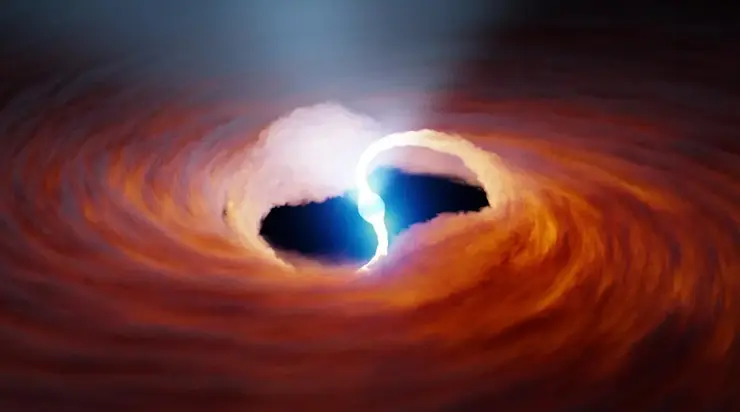Scientists at NASA have gained insight into the nature of enigmatic radio bursts from deep space
Scientists have gained insight into the origins of an unusual outburst of radio waves from space, which was captured by NASA X-ray telescopes in 2022. A recent publication in the journal Nature provides a rationale for fast radio bursts that have the capability to emit as much energy in a fraction of a second as the Sun does in an entire year.
The surge of energy emanated from a magnetar, a scarce form of neutron star. This celestial body possesses an immensely potent magnetic field, billions of times more powerful than that of a typical neutron star. To date, only around 30 such magnetars have been identified.
The fast radio burst detailed in the publication originates from a magnetar known as SGR 1935+2154, a celestial body approximately 19 km in diameter situated roughly 30,000 light-years away. The initial detection of a fast radio burst from this magnetar occurred in 2020, with a recurrence observed in 2022.
The flare was observed by researchers using two NASA telescopes, who detailed the events on the magnetar’s surface and its surrounding environment both before and after the flare. Notably, a rapid radio burst was detected between two “glitches” when the magnetar suddenly accelerated its spinning rate.
Magnetars typically rotate at a rate of about 3.2 times per second, reaching speeds exceeding 11,000 kilometers per hour. Any change in its rotation speed requires a significant amount of energy. Interestingly, it returned to its original speed within just nine hours between glitches – a rate 100 times faster than previously observed in a magnetar.
“Usually, it takes weeks or even months for a magnetar to recover its normal rotation speed after glitches,” noted study co-author Chin-Ping Hu, an astrophysicist at National Changhua University of Education in Taiwan, in a statement released by NASA.
Furthermore, scientists found that prior to the 2022 fast radio burst, the magnetar started emitting intense x-rays and gamma rays.
Researchers are still uncertain about the exact cause of the rapid radio burst, but they speculate that it may be related to the magnetar’s structure. The exterior of the magnetar is solid, while the intense gravitational force compresses the inner part into a state known as “superfluid material.”
The scientists draw a comparison to a glass of water to illustrate their theory on the origins of radio bursts. When you tilt a glass of water, the water inside moves in sync with the glass. However, if this synchronized movement is disrupted, the water spills out. Similarly, changes in the rotation speed of the magnetar could lead to bursts of radio waves.



